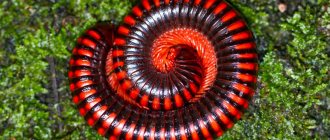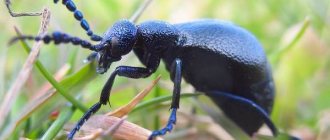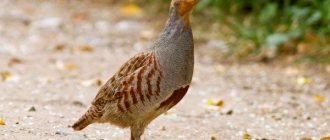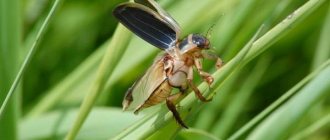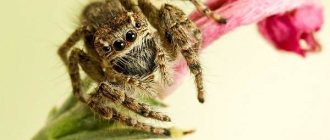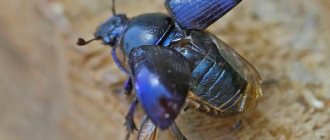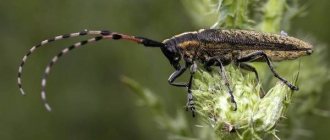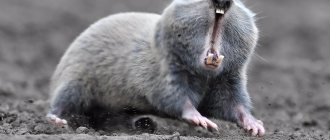Gardeners can often see worm-like pests eating strawberries. In fact, these are not worms, not wireworms and not caterpillars, but moths. This is the common name for millipedes, which have two pairs of legs on each body segment (except for the four front and rear). Who are these noobs and how to get them away from strawberries, let's figure it out.
- Kivsyak: description of the pest
- Signs of plant damage and damage
- Risk group
- How to deal with worms on strawberries
- Using traps against nooses
- Measures to actively combat kiwis
Kinds
Giant nodule is one of the most interesting subspecies. The number of their legs reaches seven hundred. They look like a huge worm. Typical habitat Africa is a place where many varieties of this subspecies exist.
The diplopod's head contains small antennae, segments, and olfactory and tactile organs. The centipede itself is a single organism, protected by strong “armor”, which is quite hard to the touch (this in turn helps the insect to avoid damage). Shades – yellowish, brownish.
In nature, there are still individuals with very dark “armor” and even with an interesting “pattern” on it. African nodule has reddish, yellowish and bluish shades. This species is the largest, native to East Africa. Females are slightly smaller than males. Over the course of a year, their length increases by 0.5 decimeters. Calm, non-aggressive.
Centipedes also have other colors of “armor”, for example, olive nodule . His body shimmers with dark (a combination of green and gray) shades. The segments are clearly demarcated. Lives in southern Africa. The eggs are laid in a dung heap. In the wild they live up to 7 years, in captivity this number can increase several times. The individual is less timid than the others, and therefore emits odorous liquid less often.
Rainbow nod has an interesting name for a reason. It is characterized by grayish and black shades of the shell; there is a red line on the body. The length of the insect is up to twelve centimeters. This species often lives in Thailand and Vietnam. It feeds on fallen leaves and lives in them. When hungry it bites.
Prevention
It is easier to prevent kiwis from entering the garden than to get rid of them later. Therefore, you need to follow these site processing rules:
Liming the soil to a depth of 20 cm will help clean the soil from the pest.- After harvesting the autumn harvest, plant residues, especially weeds, are removed from the soil before planting crops.
- Late autumn plowing and earlier spring cultivation raises heat-loving pests - they die from the cold.
- From time to time it is useful to sow green manures - green fertilizers - on the site. In this capacity, you can use white mustard, yellow lupine, peas, and sunflower.
- Mulching and agrofilm will protect ground crops from pests.
- Organic fertilizer (manure, humus) must be carefully inspected before applying to the soil, since the pest can enter the site in this way.
Lime consumption rates for liming (kg/sq. m):
| Acidity, pH | Clay, loam | Sands, sandy loam |
| Less than 4.0 | From 0.5 | 0,35 |
| 4,1…4,5 | 0,4–0,5 | 0,25–0,3 |
| 4,6…5,0 | 0,3–0,4 | 0,2–0,4 |
| 5,1…5,5 | 0,3…0,25 | They don't contribute |
| 5.5 and above | They don't contribute | They don't contribute |
Before liming the soil, it is necessary to clarify the conditions for growing the crop. If you need acidic soil, then it is better to avoid liming, since the pH increases after such treatment. Such crops include, in particular, rhododendron, blueberries, azaleas, and potatoes. Also, you cannot add lime at the same time as digging up green manure.
All construction waste must be removed from the garden - boards, slate, bricks. Invertebrates usually live in these mini-dumps.
The fruits of strawberries and cucumbers will not be damaged if you tie up the vines and install supports. Water the soil moderately and do not over-moisten it. The harvest is harvested in a timely manner, without allowing the fruits to fall off.
As already mentioned, grasshoppers start in manure heaps and compost pits. To prevent the pest from entering the garden, the fertilizer must be prepared correctly. So, the manure pile needs to be watered and mixed. Then a temperature of 60°C or higher is created inside, causing the centipede to die.
When preparing composts, the components - food waste, peat, sawdust, etc. - are stacked in layers, each sprinkled with superphosphate, potassium chloride or watered with a solution of table salt (take 1 liter of salt per bucket of water).
Owners of summer cottages noticed that centipedes crawl out of the ground in the rain, like worms. After a rainstorm, they can be collected by hand and destroyed.
Lifestyle
surrounding the centipede includes a considerable number of diverse living organisms. It spends its entire life on the forest floor; it digs out passages in the ground. The fact that the noon has many legs is not always able to help it avoid the threat of a dangerous predator, because it is very slow.
By her character you can understand that she is a phlegmatic person. And this is a consequence of the fact that she has no dangerous opponents in nature. The only creatures that bother them are parasitic mites. To protect and scare away predators, they emit a foul odor and wrap themselves in a tight ball. His favorite pastime is to bury himself in the ground and slowly become numb.
The smell emitted by centipedes helps not only themselves, but also some other animals. As evidence, we can say about the lemur, which, when danger comes, intimidates the nook and rubs its body with its odorous secretions. This is how he manages to escape from his opponents.
Many are of the opinion that how nasty the odor of the kiwi is directly depends on its color. For example, white diplopods smell really very unpleasant. However, this does not stop people who are passionate about exotics, and they are often interested in breeding such squids at home.
However, hobbyists often keep African snakes, which are similar to ordinary snakes, except that they have numerous legs. The box or something similar where they will live should be made of plastic or glass. They are easy to care for. Keeping kissyaks has a number of disadvantages.
The main one is excessive timidity, as a result of which centipedes curl up in a tight ring and emit a nasty smell. It is recommended to use gloves before handling centipedes. After all, discharge easily stains clothes. They are very peaceful, calm, but unsociable. The price for one kivsyak reaches about six hundred rubles.
Signs of defeat
What does a strawberry affected by a nematode look like? When a blackhead lesion is still at the initial stage of development, it can be quite difficult to determine it, and sometimes even completely impossible. Gardeners focus on the symptoms that occur in plants when there is a lack of substances for adequate nutrition; they suggest possible damage by a nematode:
- The growth of strawberry bushes slows down significantly;
- There is a noticeable deformation of the ovaries and berries;
- On the leaves, which become significantly smaller in size and curl up, galls are formed - a swollen surface on the upper part;
- Thickening and shortening of the petioles occurs.
It is noteworthy that during flowering and subsequent formation of berries, worms are also not visible in strawberries. They can be distinguished using a microscope. There is a method for detecting the pest, which consists in the fact that strawberry leaves or flowers, after being crushed, are placed in water. It won’t be long before it’s easy to see the thin threads of worms with the naked eye, if they exist, of course.
A nematode can attack not one, but several plants at once. After the invasion of these worms, the strawberries most often die after drying out. Therefore, it is necessary to combat this pest, especially since, as already mentioned, it poses a danger to the owner of the site and his loved ones.
The harm caused by this parasite is somewhat similar to the harm caused by strawberry worms; they bore holes in the berries and other fruits. Mostly berries close to the ground are affected.
Nutrition
Kivsyaks are often called gluttons, because in one month they consume a bucket of food. Their diet consists of mushrooms, rotten shoots, bark, and so on. However, when caring for a centipede in an apartment, you don’t have to worry about its diet, because it is omnivorous. Eats both meat products and dairy products (cottage cheese). Some people feed their pets fruits, vegetables and any other plant foods.
A notable fact about diplopods is that they often eat chalk. This is due to the content of calcium and vitamins in the composition (they strengthen the shell). Chalk can be replaced with egg shells. You should not give too much food, otherwise mold will begin to form on the leftover food. Therefore, they should be removed immediately.
A favorite place for breeding is considered to be a manure heap, which is why many summer residents often find these invertebrates in the ground. If you do not take any measures to combat them, they will soon begin to gnaw on the roots, as a result of which the plants will simply stop growing normally due to lack of nutrients. It is not always possible to see such small pests, because their length is a maximum of one and a half centimeters.
As mentioned earlier, the color of the shell of centipedes depends on their variety. They are black, white, olive, yellow, brown. Their bodies have a large number of warts and sparse setae; each segment contains two pairs of legs.
Quite often, nodules end up on tubers along with manure. That is why, before buying any fertilizer, it is recommended to carefully inspect it and check for the presence of these small pests and their larvae.
To prevent unexpected “guests” from appearing on your site, the gardener should periodically clean the soil and greenhouse (remove plant debris), and also treat the soil annually using chemical and thermal methods.
Home maintenance
The largest member of the family, the African giant nodule, is most often chosen as an exotic pet. Maintaining a kivsyak will not cause much trouble:
- The first step is to choose a suitable terrarium. It doesn't have to be deep because centipedes don't climb walls. The container must have a large area so that the nodule can run along the bottom.
- At the bottom you need to put a bedding 7-10 cm thick. Suitable:
- ready-made coconut substrate;
- leaves;
- wood chips;
- wood that has begun to rot.
- Humidity in the terrarium should be between 70-90%, temperature 30 ° C during the day, and 5-7 ° lower at night.
- Diet of “homemade” nodule:
- stale, rotten plant products (leaves, fruits, vegetables);
- mushrooms;
- rotten wood.
- Calcium is definitely needed as a mineral supplement:
- lime;
- chalk;
- crushed eggshells;
- dolomite flour.
- Once a month, you can give cat food as a vitamin supplement.
Note! Nosetails reproduce well in captivity; they do not need to create any additional conditions for this. They lay eggs directly in the soil of the terrarium, so you should not change the litter while waiting for the “addition”.
Reproduction and lifespan
In nature, the female usually lays up to 70 eggs in the ground (right where she lives). The larvae of this species practically do not differ in appearance from their parents, except that they have smaller legs. When cold weather sets in, they and adults prefer to burrow deep into the soil with optimal moisture. And this is how they survive the winter.
To distinguish centipedes by gender, it should be remembered that males have homopods (similar to additional limbs), which are located inside the head segment (its inner part). This information is especially important for those who intend to raise invertebrates at home.
In order for the female to accurately lay eggs, it is necessary to provide all the necessary conditions for this - a variety of food, optimal humidity, proper care. If you follow all the steps correctly, the centipede will live for at least ten years.
Features of life
Understanding the life processes of the pest will allow you to develop an effective strategy for its destruction. They spend most of their time (including wintering) in the soil, not going deeper than 30 cm. They move slowly. They do not like light and prefer to be active in the evening and at night. Favorable living conditions - high humidity, moderate temperature. They eat rotten organic matter, for which they are often called soil orderlies. But, if the food supply is not enough, they begin to gnaw at the root system and eat fruits located close to the soil. In the garden and vegetable garden, strawberries, cucumbers, zucchini, and root vegetables are at risk. Life expectancy is 5–7 years, which is greatly facilitated by the absence of natural enemies.
Feeling threatened, centipedes curl into a tight spiral and freeze. Thanks to the camouflage color, they become almost invisible on the ground. In case of aggression, a specific liquid is released, characterized by a strong odor of iodine. For small invertebrate animals, the secretions of the noose are dangerous within a radius of 20–30 cm. The only danger to humans is if the poison gets on the mucous membranes of the nasopharynx and eyes. The skin may experience slight itching, which goes away within 30 minutes, and slight redness.
Individuals become sexually mature in the 2nd–3rd year of life. Females lay eggs in the soil; after a few weeks, larvae hatch from them and begin to actively feed. They are distinguished from their parents only by their smaller size and susceptibility to chemicals. The diet is the same as that of adults, except that young animals are still more often found in berries.
Each individual eats an amount of food daily that is 1.5 times its own weight.
Centipedes make tunnels in strawberry fruits. If you break a berry, you can see several individuals intertwined in it. When grasshoppers gnaw at the roots of a plant, cavities form in the rhizomes, gray spots appear on the leaves, and after a while the crop, deprived of nutrients, withers and dies.
Benefits and harms
Noiseweeds cause obvious harm when they live on gardeners’ plots. They damage the roots, thereby preventing the seedlings from developing normally. Sometimes small pests get into flower pots. To get rid of them, you need to put the pot in water for a couple of hours, wait until all the centipedes come out, and collect.
You can’t grow a compost heap in pots, it’s useless. For feeding, it is better to use complex fertilizer. Humus is often used against garden weeds. It is also worth mentioning the benefits that kiwis in the country can bring. They are able to “recycle” compost waste and turn it into nutritious soil.
If there is a strong disgust from such a neighborhood, a person can use some chemicals, such as “Karate”, “Aktofit” and others. But for a more effective result, it is best to add chloride salts.
Enticement into compost pits
The technique of using bait traps has been developed, which is as follows. They dig holes like compost pits. Ensure they are attractive to invertebrates by filling them with all organic garden waste.
The efficiency of catching and killing centipedes increases when the contents are treated layer by layer with chloride salts (sodium or potassium).
If the mixture is regularly moistened, mixed and covered with turf in the summer, a climate unfavorable for protein life will be created inside. In late autumn, compost is scattered over the surface of the soil for the purpose of freezing.
The odoriferous wood borer is also called the willow borer because willows are its favorite food. A complete description of the insect can be found here.
To combat potato moth, you can use both chemical treatment and traditional methods. You will find detailed information at this https://stopvreditel.ru/rastenij/selxoz/kartofelnaya-mol.html link.
How to get rid of nodule?
The appearance of these centipedes in large numbers will not bring any benefit in the form of processing rotting organic matter for the garden. Also, together with worms, they form fertile humus, but again only in small groups.
The massive proliferation of these pests means that gnawed beets, raspberry and tomato bushes, potatoes and other agricultural crops will soon appear on the site. In order to avoid such encounters and keep your harvest intact, you need to understand how to get rid of nodule.
This is interesting! When diplopods begin to move, the forelimbs are activated first, and then everything else. You can notice a kind of wave.
Large individuals are usually not found in the areas. In most cases, they live in Africa, America or Asia (tropical latitudes). In Russia, you can rarely see giant centipedes, but medium ones are very common.
Over the course of a year, these creatures are able to process a lot of plant residues that have already begun to rot, turning them into nutritious soil (for this you need to dig a compost pit).
The most common type of centipedes in the middle zone is gray-steel (reaches more than thirty millimeters in length). In second place is the sandy one (the shell is black with two longitudinal stripes of orange color).
Mating of two individuals occurs only at temperatures above +25, and there must also be high humidity. Nest building materials are excrement and pieces of soil. The small larvae look like smaller versions of the adults, but with a difference in the number of legs. The growth process is accompanied by periodic molting, which contributes to the appearance of additional pairs of legs.
Nematode on strawberry
Nematodes are small, almost miniature worms that cause harm to plants: strawberries, raspberries and wild strawberries, located on their stems, as well as the root system. The result of their activity is the deterioration of cultural tissues and the sucking of their nutritious juices. They leave behind a kind of secretion, which is also harmful to the bloodless plant.
The strawberry nematode that attacks strawberry plantings is only 2 cm long. They are colored yellow. Female individuals are distinguished by good fertility and can carry many eggs in their bodies, sometimes up to 1000 eggs. When thin white worms appear on strawberries, you need to take immediate action. To combat this dangerous pest, the correct agricultural practices are used and the necessary means are used.
Is it worth fighting against the nod?
By nature, kiwis are vegetarians, but if a person keeps them at home, then you can feed them anything, without going to extremes, of course. Invertebrates climb from the site into the house if there is high humidity outside, which provokes accelerated reproduction of individuals. Houses are usually settled in the kitchen or bathroom, since water is present there. They scare you with their appearance when they crawl on the ceiling.
They are active at night, because during the day the sun negatively affects the shells, drying them out. They do not carry infections or diseases, and do not bite people or domestic animals. They are very shy, and in case of any danger they turn into a dense circle and emit foul odors to protect the abdomen. There is no danger to people, except that they may stain their clothes or hands.
Few people can be happy about the appearance of centipedes in the house, especially impressionable owners. In such cases, many wonder how to eliminate them. Insecticides are not very effective against pests, so the best solution is to use special traps. They should be laid out in the evening. To attract nooks, any damp rag or pieces of potato are placed there. For greater effect, you can use “Pochin” (food bait-insecticide).
Sometimes pests settle in pots with indoor plants, and thereby greatly upset the owners. Noises appear there because organic matter is necessarily present in any pot. This can happen if you use untreated soil from the site.
Important! Before adding garden soil to a pot for indoor plants, it is recommended to pour boiling water over it.
If you regularly pour tea leaves into pots, this will only speed up the process of pest reproduction. This is also facilitated by fallen buds and leaves that were not removed on time. After the moths eat all the rotten stuff, they switch to flowers.
If the plant is small in size, then it should be carefully dug up and the pot with soil should be placed in water for a while. If it is impossible to use this method, it is better to use one of the popular insecticides - “Karate Zeon” or “Aktofit”.
Mechanical means of destruction
Mechanical methods of control include traps. Traps are installed in their habitats - near vegetable and berry beds. Let's look at several types of traps:
- A trap made of wire is half immersed in the soil. Poisoned, slightly rotting baits are placed inside the structure. Pieces of potatoes or carrots are used as bait.
- Wooden planks can also act as a trap for centipedes. The boards are laid out along the planting beds. It is recommended to lay the boards on slightly moist soil. In dry and hot weather, centipedes will happily hide under such a wooden shelter, since moisture remains under the boards longer. Collection of centipedes must be done daily several times during the day. Instead of boards, you can use pieces of slate, tiles and flat stones.
- Protect the plantings with wooden shields and stretch plastic film over the shields. From the side of the bed, spread the film with adhesive or oil, and dig trenches under the shields and install trays or jars. Centipedes climbing up the film from the outer side of the partition get stuck in the transition to the inner plane of the shield, which will be treated with glue or oil. Centipedes will not be able to move and will fall into the installed containers under the shield. The height of the shield should not exceed 10 cm.
- Small piles of tops or other vegetation can be laid out along the plantings. Millipedes crawl into such traps to get food or hide from the sun's rays.
The most popular means of getting rid of centipedes today are traps using pieces of root vegetables. In this case, the food in the baits is treated with suitable insecticides and scattered in different corners of the crop area. This method takes quite a lot of time, because it will require constant moistening and updating of the bait.
Most often, a complicated version is used, when the catch containers are buried at the bottom of the funnels and laid out under any moisture-insulating material (for example, a board). It has been established that parasites constantly use such places for shelter, so they will have to be removed from traps quite often. The disadvantages of this method include the ineffectiveness of application when the number of pests is high.
Baits can be used in other ways. It is necessary to dig compost-like pits and make them as attractive as possible for centipedes - filling the space with various garden waste is suitable for this.
It is worth noting that the efficiency will increase significantly if the contents of such pits are treated with sodium and potassium salts - a moistened, mixed mixture of this type, covered with a layer of turf, will create unfavorable living conditions.
Preventive actions
In order for the worm to stop spreading on strawberries, first of all, you need to take care of high-quality planting material. When inspecting seedlings during purchase, pay attention to the roots. They should be without the slightest sign of damage, but even in this case, they must be treated with hot water before planting.
During the entire growing season, the soil requires composting. Compost contains fungi that destroy the nematode pest.
An important aspect is constant compliance with crop rotation. For strawberries, it is necessary to change the growing location every 5 years. This measure minimizes the spread of the nematode throughout the area.
Important information! It will not be very good to plant cabbage, peas, beans, carrots and potatoes next to strawberries.
When nematode treatment has been carried out, for the next season you can choose berry varieties that are more resistant to the parasite. These can be varieties:
In the spring and autumn, it is necessary to carefully remove the remains of plants and unnecessary grass from the garden. All this is necessarily burned, and those pests that remained there, preparing to spend the winter, are destroyed.
When planting, it is necessary to avoid thickening of plants. They are periodically thinned and weeded. This reduces the number of nematodes significantly.
Which method to choose
When infecting strawberry bushes with a nematode, you should remember that even the use of strong chemicals does not provide complete confidence in the destruction of the parasite. In addition, especially novice gardeners should not get carried away with chemistry and it is better to try not to use it or only in extreme and critical cases of infection. Experienced gardeners have much more experience using such methods. It would be preferable for both to use numerous folk remedies and carry out prevention.
By using control methods and watering correctly, as well as fertilizing strawberries in a timely manner, it is possible to completely prevent the pest invasion. But still, if this fails, the necessary measures are urgently applied, then the strawberry harvest will be preserved.
Fighting methods
There are a sufficient number of methods for combating nematodes on strawberries, but they all have one thing in common - this process is quite long and painstaking.
The best condition for the development of white worms in strawberries is high temperature, when it rises above 25 degrees. Also, a certain soil acidity has a positive effect on the reproduction of nematodes.
Nematode on strawberries starts from seedlings
The main reason why infection most often occurs is the use of seedlings that were initially infected. For quite a long time, sometimes up to several years, pest eggs can remain in standby mode, and under good conditions they can become active very quickly.
Folk remedies
When choosing methods to combat strawberry nematodes, it is better to first focus on more gentle methods, which include traditional methods. With their help, you can achieve a very serious reduction in the number of pests, down to a safe number. How to deal with worms in strawberries:
- The simple hot water treatment method, which is used by many gardeners, has good effectiveness. For this procedure, you need to dig up the affected bushes and wash their roots with tap water. After this, they are placed in hot water, with a temperature of 45 to 55 degrees. The roots should remain in such a bath for 10-20 minutes. This time depends on how much the pest damaged the plant. You should pay special attention to the temperature of the water, because if you make it hotter, the plant will subsequently die;
- Calendula tincture helps get rid of pests well. It is prepared at the rate of 5 tablespoons per volume of water equal to 5 liters. Once a week, strawberry bushes are watered with this infusion for a long period of time;
- You can also infuse marigolds for this purpose, which are poisonous to the pest. On the one hand, parasites really like the smell of marigolds, and it attracts them, and on the other, the juices of the plant kill the pest. 5 kg of the plant is mixed with an equal amount of water and infused for 2 days. It is necessary to filter the resulting infusion and water the diseased strawberry bushes;
- Another plant that is insisted on is hogweed. It is prepared according to the same scheme, pouring 0.5 kg of raw materials with the same 5 liters of water. The infusion is prepared for a day, after which it must undergo filtration. Then they water the bushes with it;
- Farmers often prefer to get rid of nematodes using the drug Dekaris. These are tablets that can be purchased at a pharmacy. Take one tablet and dissolve in 1 liter of water. Watering strawberries with this product is done about 4 times;
- An infusion of onion, preferably a batun, is prepared using 200 g of raw material per 5 liters of water. Water the strawberries with this liquid once every week.
Important information! Hogweed is a poisonous plant and therefore dangerous. It is necessary to use protective equipment when working with it.
An effective method, according to experienced summer residents, is to plant plants such as mustard and green radish next to the strawberry beds.
Chemical methods
When traditional methods have not brought the desired result, and the small worms on the strawberries have not disappeared, chemical preparations are used. Among these drugs are the following:
- Heterofos is used in the form of a solution, which is prepared at the rate of 15 g of the drug per 10 liters of water. Strawberries are processed at an air temperature of 20 degrees Celsius. Also, bushes are often soaked in this solution before planting;
- The drug Phosfamtide is used in a solution corresponding to 0.02%, and the treatment of plants is repeated every week;
- Mercaptophos and Ruskamin are used according to the same scheme.
Important! This drug is very toxic, it is necessary to handle it using protective equipment: special clothing, gloves, and most importantly, wear a respirator.
Sequence of treatment
To begin treatment, the bushes must be examined every week in the spring, at the same time they are fertilized. These fertilizers should be organic and contain potassium. You can use ash.
